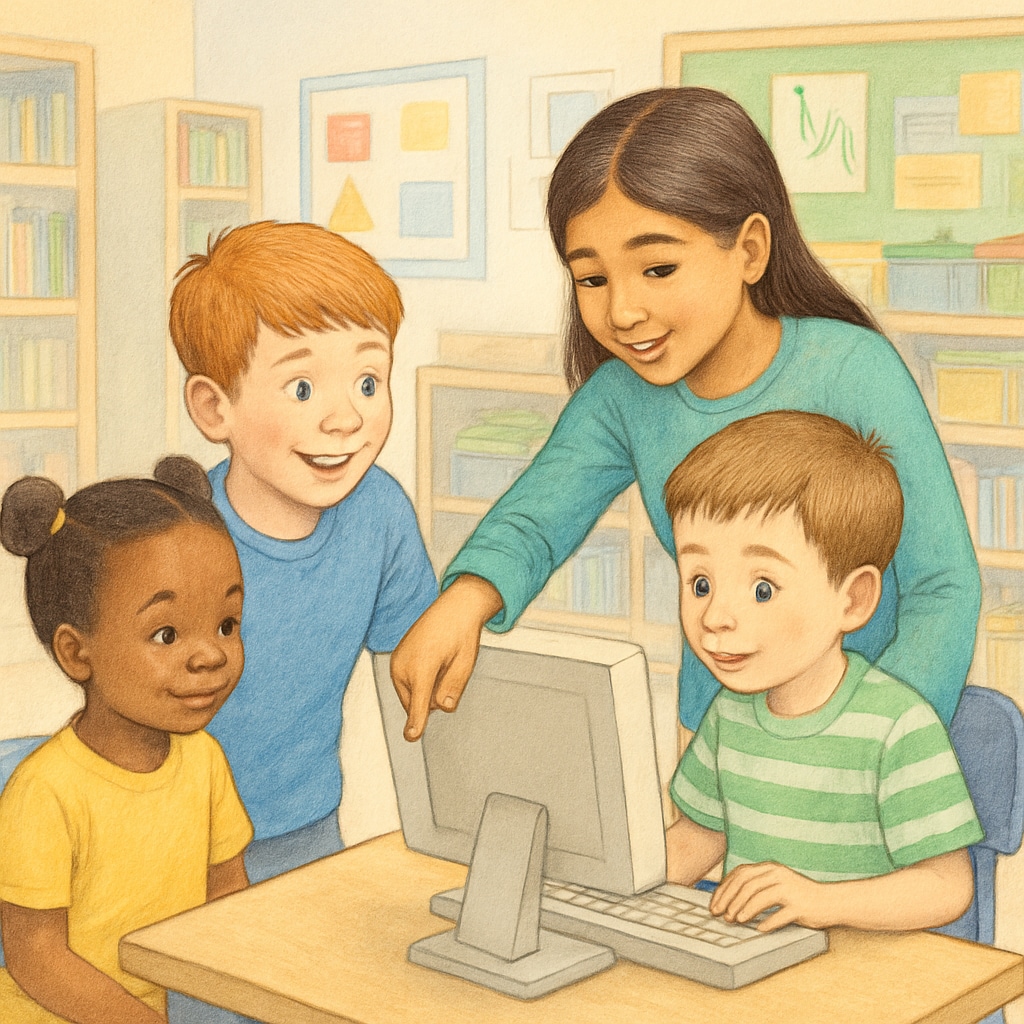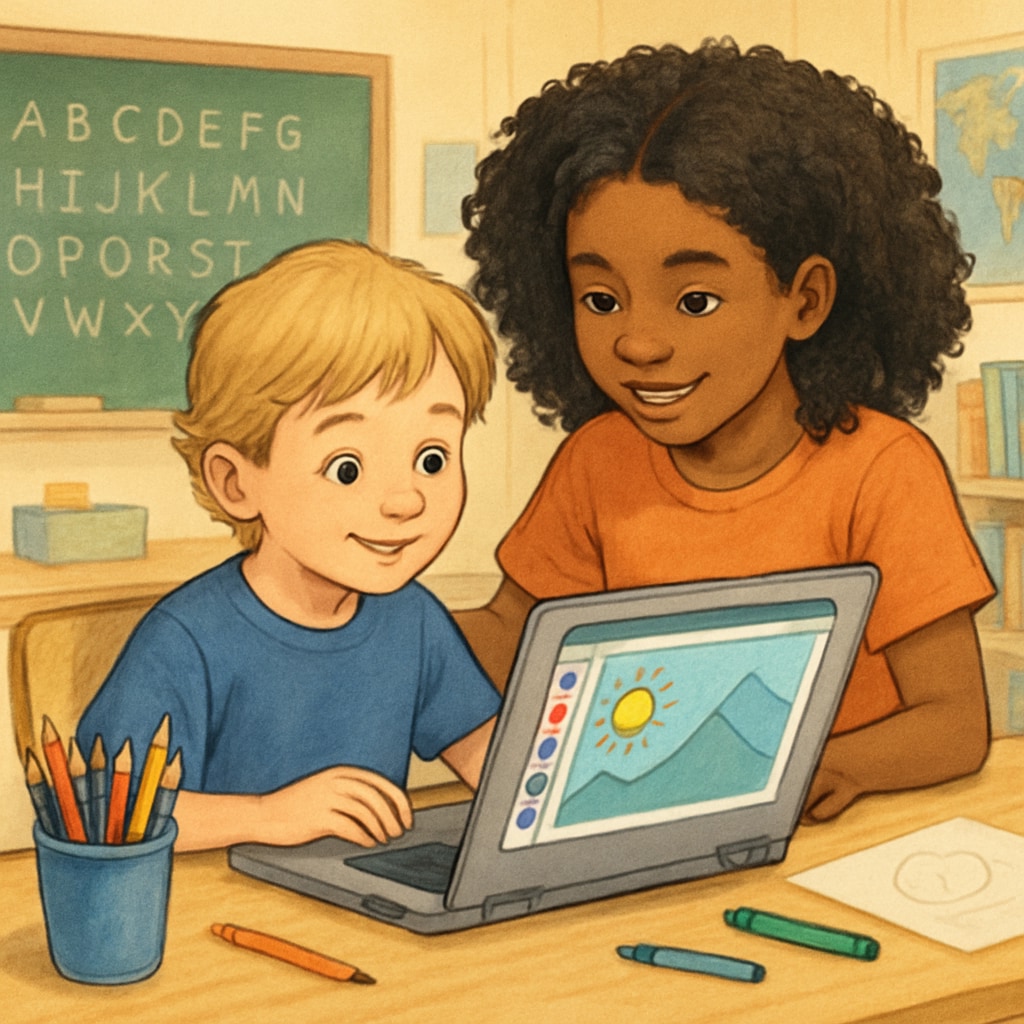Cross-age collaboration can be a rewarding experience for young learners, combining the curiosity and creativity of kindergarteners with the developing skills and mentorship potential of fourth-grade students. By leveraging computer activities in a structured yet flexible manner, educators can create engaging and educational partnerships. This article explores the design of effective kindergarten-fourth grade computer activity projects, offering practical suggestions to promote collaboration, learning interest, and mutual growth.

Why Cross-Age Partnerships Work
Cross-age learning projects, such as kindergarten-fourth grade computer activities, offer several benefits. Younger students benefit from the mentorship and guidance of older peers, while older students develop leadership and communication skills. Additionally, pairing students of different ages encourages empathy and teamwork, essential life skills that extend beyond the classroom.
For example, kindergartners might struggle with basic computer navigation, while fourth graders can assist with mouse control or typing. As a result, both groups gain confidence in their abilities and learn to appreciate each other’s perspectives. This dynamic fosters a positive, collaborative learning environment that motivates students.
Designing Effective Computer Activities
Creating successful computer activities for kindergarten and fourth-grade partnerships requires careful planning. The activities should be age-appropriate, engaging, and designed to accommodate varying skill levels. Here are some suggestions for structuring such projects:
- Interactive Story Creation: Use applications like Scratch or Book Creator to design interactive stories. Fourth graders can assist kindergarteners with coding or organizing narrative elements.
- Educational Games: Pair students to play or design simple educational games. Platforms like Kahoot or ABCmouse provide opportunities for collaboration.
- Digital Art Projects: Programs like Paint 3D or Canva allow students to create collaborative artwork. Older students can introduce tools, while younger ones contribute creative ideas.
- Problem-Solving Challenges: Gamified problem-solving exercises, such as puzzles within Minecraft Education Edition, encourage teamwork.
By incorporating these ideas, educators can create meaningful activities that balance skill-building with fun.

Tips for Implementation
While designing computer activities, educators should consider the following tips to ensure a smooth experience:
- Set Clear Objectives: Define the goals of each activity, whether it’s improving technical skills, fostering creativity, or enhancing collaboration.
- Provide Guidance: Offer support to both age groups, ensuring kindergarteners feel confident and fourth graders understand their role as mentors.
- Use Simple Interfaces: Choose programs and tools with intuitive designs that minimize frustration for younger learners.
- Encourage Reflection: After each activity, allow students to discuss what they learned and how they contributed.
Additionally, consider scheduling regular feedback sessions with teachers or parents to evaluate the effectiveness of the program and make necessary adjustments.
Overcoming Challenges
While cross-age partnerships are rewarding, they can also present challenges. For example, kindergarteners may struggle with focus, while fourth graders might need reminders about patience and encouragement. To address these issues:
- Pair students carefully, considering personalities and skill levels.
- Provide structured tasks with clear instructions to prevent confusion.
- Celebrate small successes to keep both age groups motivated.
By proactively addressing potential challenges, educators can ensure that the program runs smoothly and benefits all participants.
Conclusion
Kindergarten-fourth grade computer activity projects offer a unique opportunity to bridge age gaps and foster collaborative learning. With structured planning, engaging tools, and thoughtful implementation, educators can create programs that encourage growth, creativity, and teamwork. Ultimately, these projects not only enhance technical skills but also instill valuable social and emotional competencies in students.
Interested in learning more about cross-age educational approaches? Visit Collaborative Learning on Wikipedia or explore Mentorship Programs on Britannica.


